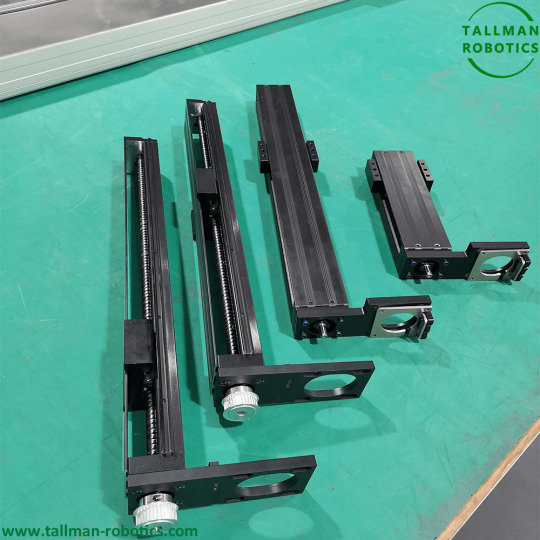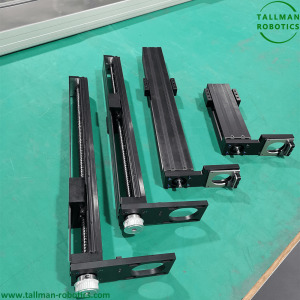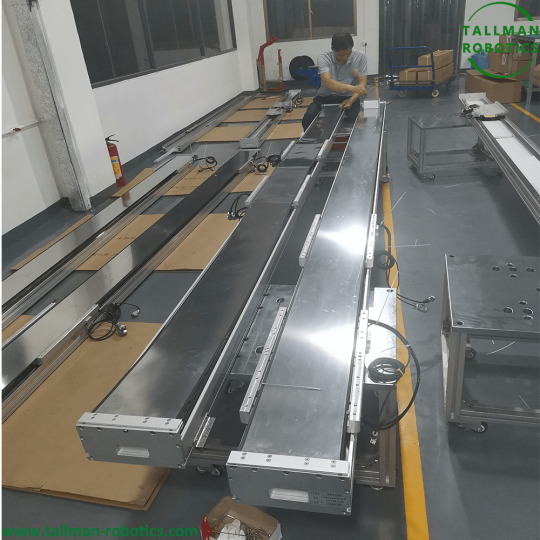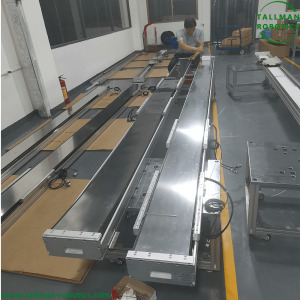#HighSpeedMotorizedLinearActuators
Explore tagged Tumblr posts
Text
High Speed Linear Modules Will Be Delivered To India

High Speed Linear Modules have been finished for clients from India.

Here are some additional details about high-speed linear modules, Speed and Acceleration: High-speed linear modules are designed to achieve rapid motion along the linear axis. They can reach velocities ranging from a few centimeters per second to several meters per second, depending on the specific model and application requirements. Acceleration capabilities are also important, as they determine how quickly the module can start, stop, or change direction. Load Capacity: High-speed linear modules are engineered to handle different load capacities. The load capacity refers to the maximum weight or force that the module can effectively support and move along the linear axis. It's crucial to consider the anticipated loads in your application and select a module with an appropriate load capacity to ensure optimal performance and safety. Stroke Length: The stroke length refers to the total distance the linear module can travel along its linear axis. It's an essential specification to consider as it determines the range of motion available. Stroke lengths can vary significantly, ranging from a few centimeters to several meters. Manufacturers often offer different stroke length options to accommodate various application requirements. Precision and Repeatability: High-speed linear modules are designed for precise positioning and repeatability. Precision refers to the degree of accuracy in achieving a target position, while repeatability refers to the module's ability to return to the same position repeatedly. These modules often incorporate feedback sensors, such as encoders or linear scales, to provide accurate position feedback and ensure precise control over the linear motion. Integration and Mounting Options: High-speed linear modules are designed to be easily integrated into existing systems or equipment. They may feature mounting holes or slots for convenient attachment to frames, platforms, or other components. Additionally, manufacturers often provide mounting accessories and brackets to facilitate installation. Environmental Considerations: Depending on the application environment, high-speed linear modules may need to meet specific requirements. Some modules are designed to operate in cleanroom environments, while others have protection against dust, moisture, or harsh conditions. It's important to consider the environmental factors and choose a module that is suitable for your specific application. Control and Communication: High-speed linear modules are typically controlled through a dedicated motion control system. They can be integrated into a larger automation setup or controlled individually. Communication protocols such as Ethernet, Modbus, or CAN bus may be used to interface the module with other devices or control systems. Safety Features: To ensure safe operation, high-speed linear modules may incorporate safety features such as limit switches, emergency stop buttons, or motion detection sensors. These features help prevent accidents, protect the equipment and operators, and comply with relevant safety standards. When selecting a high-speed linear module, it's important to consider your specific application requirements, such as speed, load capacity, stroke length, and environmental factors. Consulting with manufacturers or suppliers can provide you with detailed information about the available options and help you choose the most suitable module for your needs. You are welcome to https://www.youtube.com/@tallmanrobotics to watch our video centre for more projects or visit our website to check other series or load down e-catalogues for further technical data. Read the full article
#Highspeedlinearmodulesystem#HighSpeedLinearModulesforAutomation#Highspeedlinearslidemodule#HighSpeedLongStrokeBeltDrivenLinearModule#HighSpeedMotorizedLinearActuators#High-speedLinearShiftMechanism#LinearMotionSystems#StainlessSteelLinearModuleHighSpeedBallScrewRail
0 notes
Text
High Speed Linear Motors Are Ready For Delivery To UK

High Speed Linear Motors from Tallman Robotics Will be Transported To UK.



Can you provide examples of control algorithms commonly used for High Speed Linear Motors? Certainly! Here are a few examples of control algorithms commonly used for linear motors: 1. Proportional-Integral-Derivative (PID) Control: PID control is a widely used control algorithm for High Speed Linear Motors. It calculates the control signal based on the error between the desired position and the actual position feedback. The PID controller consists of three components: the proportional term, the integral term, and the derivative term. The proportional term provides immediate response to the position error, the integral term eliminates steady-state errors, and the derivative term improves stability and responsiveness by anticipating future error trends. 2. Model Predictive Control (MPC): MPC is an advanced control algorithm that uses a mathematical model of the system to predict its future behavior. It optimizes a cost function based on the predicted trajectory and control inputs to generate the control signal. MPC takes into account system dynamics, constraints, and future setpoints to achieve precise motion control. It is particularly effective in applications where there are constraints on the motor and system behavior, such as minimizing overshoot or avoiding collisions. 3. Sliding Mode Control (SMC): SMC is a robust control algorithm that aims to make the system track the desired trajectory regardless of uncertainties and disturbances. It creates a sliding surface that the system attempts to reach and maintain. SMC uses a switching control law that actively adjusts the control signal based on the position error and its rate of change. This algorithm is known for its ability to handle nonlinearities and external disturbances, making it suitable for applications with varying loads or changing environmental conditions. 4. Adaptive Control: Adaptive control algorithms continuously adjust the control parameters based on thesystem's characteristics and changes in the operating conditions. These algorithms use online estimation or identification techniques to adapt to varying system parameters, such as load variations or changes in friction. Adaptive control algorithms aim to maintain accurate motion control by continuously updating the control signal based on the estimated or identified system parameters. 5. Feedforward Control: Feedforward control algorithms compensate for known disturbances or feedforward signals to achieve precise motion control. These algorithms calculate and apply a control signal based on the expected disturbance or desired trajectory before the feedback is received. Feedforward control algorithms can improve the system's response time and reduce tracking errors by preemptively compensating for known disturbances or inputs. It's important to note that the selection of the control algorithm depends on the specific requirements of the application, the system dynamics, and the desired performance criteria. Often, a combination of these control algorithms may be used to achieve the best results. The implementation details and parameter tuning of these algorithms may also vary depending on the specific control system and High Speed Linear Motors setup. You are welcome to https://www.youtube.com/@tallmanrobotics to watch our video centre for more projects or visit our website to check other series or load down e-catalogues for further technical data. Read the full article
#ElectricLinearActuators#Highspeedactuators#HighSpeedLinearModule#HighSpeedMotorizedLinearActuators#IronlessMotors#Linearmodules#LinearMotionActuators#LinearMotors#Sensorsforlinearmotors
0 notes